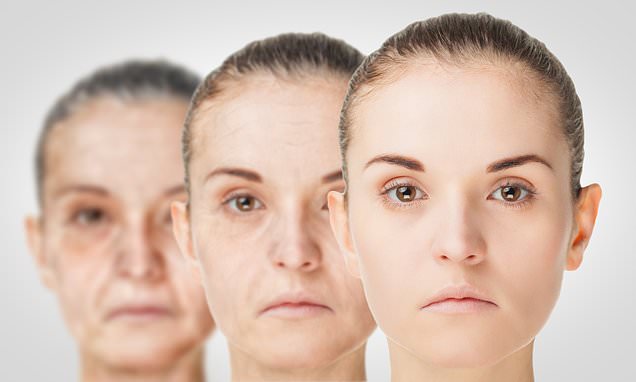Silent Sinus Syndrome (SSS) is a rare condition that often goes unnoticed due to its subtle symptoms. One of the hallmark features of this syndrome is facial asymmetry, which can be a perplexing and concerning aspect for those affected. In this article, we delve into the intricacies of Silent Sinus Syndrome and its connection to facial asymmetry, shedding light on the causes, symptoms, and potential treatment options.
Understanding Silent Sinus Syndrome:
Silent Sinus Syndrome, also known as chronic maxillary atelectasis, typically occurs when there is a gradual collapse of the maxillary sinus. Unlike traditional sinus conditions, SSS often manifests without the usual symptoms of sinusitis, such as nasal congestion or pain. The lack of noticeable symptoms makes it challenging for individuals to identify the condition early on.
Facial Asymmetry: A Puzzling Sign:
One of the defining characteristics of Silent Sinus Syndrome is the development of facial asymmetry. This asymmetry is a result of the collapsed maxillary sinus causing changes in the underlying structures of the face. As the sinus deflates, the affected side of the face may appear sunken or drooped, leading to a noticeable imbalance in facial features.
Causes of Facial Asymmetry in Silent Sinus Syndrome:
The root cause of Silent Sinus Syndrome lies in the blockage of the sinus ostium, the opening that connects the sinus cavity to the nasal passages. When this opening becomes obstructed, negative pressure builds up within the sinus, ultimately leading to its collapse. As the maxillary sinus contracts, it can affect the surrounding structures, resulting in facial asymmetry Silent sinus syndrome.
Symptoms of Silent Sinus Syndrome:
While facial asymmetry is a primary indicator of Silent Sinus Syndrome, other subtle symptoms may include changes in eye appearance, such as enophthalmos (sunken eye), and mild discomfort in the affected region. However, these symptoms are often so mild that individuals may not seek medical attention until the facial asymmetry becomes more pronounced.
Diagnosis and Treatment:
Diagnosing Silent Sinus Syndrome requires a comprehensive examination, including a detailed medical history, physical examination, and imaging studies such as CT scans. Once diagnosed, treatment options may include surgical intervention to restore proper sinus function and alleviate facial asymmetry. Surgical techniques may involve maxillary sinus reconstruction or orbital floor augmentation, depending on the severity of the condition.
Keyword Emphasis – Asymmetry:
Throughout this article, the term “asymmetry” has been intentionally emphasized to underscore its significance in the context of Silent Sinus Syndrome. Understanding the relationship between SSS and facial asymmetry is crucial for early detection and timely intervention.
Decoding the Enigma of Silent Sinus Syndrome: Unveiling the Mystery Behind Subtle Symptoms
Silent Sinus Syndrome (SSS) is a rare and often overlooked condition characterized by a painless, gradual collapse of the maxillary sinus. Despite its name, the impact of SSS can be significant, leading to facial asymmetry and other subtle yet noticeable changes. In this article, we explore the nuances of Silent Sinus Syndrome, shedding light on its symptoms, causes, and potential treatment options.
Understanding Silent Sinus Syndrome:
Silent Sinus Syndrome earned its name because it typically manifests without the classic symptoms associated with sinusitis, such as nasal congestion or facial pain. Instead, individuals with SSS may experience a gradual collapse of the maxillary sinus, leading to subtle changes in facial appearance, primarily characterized by facial asymmetry.
Facial Asymmetry in Silent Sinus Syndrome:
The hallmark sign of Silent Sinus Syndrome is facial asymmetry. As the maxillary sinus undergoes a slow and painless collapse, the affected side of the face may appear sunken or drooped. This asymmetry can be a source of concern for individuals who may not immediately associate these changes with a sinus-related condition.
Causes of Silent Sinus Syndrome:
The primary cause of Silent Sinus Syndrome is the obstruction of the sinus ostium, the opening that connects the sinus cavity to the nasal passages. When this opening is blocked, negative pressure builds up within the sinus, leading to a gradual collapse. The collapse can affect the surrounding facial structures, resulting in the observed facial asymmetry.
Symptoms and Diagnosis:
Apart from facial asymmetry, individuals with Silent Sinus Syndrome may experience subtle changes in eye appearance, such as enophthalmos (sunken eye), and mild discomfort in the affected region. Diagnosis often involves a thorough examination by an otolaryngologist, including a detailed medical history, physical examination, and imaging studies like CT scans to visualize the sinus structures.
Treatment Options:
The treatment of Silent Sinus Syndrome typically involves surgical intervention. The goal of surgery is to restore proper sinus function, alleviate facial asymmetry, and prevent further progression of the condition. Surgical techniques may include maxillary sinus reconstruction or orbital floor augmentation, depending on the severity of the case.
Enophthalmos.
Enophthalmos, a term derived from the Greek words “en,” meaning in, and “ophthalmos,” meaning eye, refers to the condition where one or both eyes appear sunken or recessed into the eye socket. This phenomenon can be caused by various underlying factors, ranging from trauma and surgical procedures to medical conditions affecting the orbit. In this article, we delve into the intricacies of enophthalmos, exploring its causes, symptoms, and potential treatment options.
Causes of Enophthalmos:
Trauma:
Blunt force trauma to the face or eye socket can lead to fractures or displacement of the bones surrounding the eye, resulting in enophthalmos.
Orbital Floor Fractures:
Fractures in the orbital floor, the bony structure supporting the eye, can cause the eye to sink backward. This is a common cause of enophthalmos after facial injuries.
Surgical Procedures:
Certain surgical interventions, particularly those involving the orbit or eye socket, may inadvertently lead to enophthalmos as a complication.
Atrophy of Orbital Fat:
Age-related changes or medical conditions that cause a reduction in the volume of orbital fat can contribute to enophthalmos.
Neurological Conditions:
Conditions affecting the nerves controlling eye movement or facial muscles may result in changes in eye position, leading to enophthalmos.
Symptoms of Enophthalmos:
The primary symptom of enophthalmos is the noticeable recession of one or both eyes into the eye socket. In some cases, individuals may also experience changes in vision, eye discomfort, or a feeling of pressure within the eye.
Diagnosis:
Diagnosing enophthalmos involves a comprehensive eye examination, including a thorough medical history review and imaging studies such as CT scans or MRI to assess the structures within the orbit.
Treatment Options:
Surgical Intervention:
In cases where enophthalmos is a result of trauma or orbital floor fractures, surgical correction may be necessary. This may involve reconstructive surgery to restore the normal position of the eye.
Fat Grafting:
In cases of atrophy of orbital fat, fat grafting procedures can be performed to augment the volume and fill the space around the eye, restoring a more normal appearance.
Management of Underlying Conditions:
Treatment of underlying medical conditions contributing to enophthalmos, such as neurological disorders, may involve a multidisciplinary approach with the involvement of neurologists or other specialists.
https://youtu.be/B3SaSFT8HNA







Thanks for your recommendations on this blog. One thing I wish to say is that often purchasing electronic products items over the Internet is not new. In reality, in the past decades alone, the marketplace for online electronic products has grown drastically. Today, you will discover practically just about any electronic tool and product on the Internet, which include cameras in addition to camcorders to computer elements and video games consoles.
An impressive share, I just given this onto a colleague who was doing a bit of analysis on this. And he actually purchased me breakfast because I discovered it for him.. smile. So let me reword that: Thnx for the treat! However yeah Thnkx for spending the time to debate this, I really feel strongly about it and love reading more on this topic. If attainable, as you turn out to be experience, would you thoughts updating your blog with extra particulars? It is highly useful for me. Big thumb up for this weblog put up!
Usually I do not read post on blogs, but I wish to say that this write-up very forced me to try and do it! Your writing style has been amazed me. Thanks, quite nice article.
Thanks for the ideas you have shared here. Yet another thing I would like to mention is that computer memory needs generally go up along with other advancements in the technology. For instance, whenever new generations of cpus are introduced to the market, there’s usually an equivalent increase in the type calls for of all pc memory along with hard drive room. This is because the application operated by way of these processor chips will inevitably increase in power to make use of the new engineering.
I’m really impressed with your writing skills and also with the layout on your blog. Is this a paid theme or did you customize it yourself? Anyway keep up the excellent quality writing, it抯 rare to see a great blog like this one these days..
An fascinating discussion is value comment. I feel that you must write extra on this matter, it may not be a taboo topic but typically individuals are not sufficient to speak on such topics. To the next. Cheers
I needed to compose you the very small note to thank you so much over again regarding the pleasing information you have discussed on this website. This is quite seriously generous of people like you to convey publicly what many individuals could have advertised for an e book to make some cash on their own, most notably considering the fact that you might well have tried it in case you desired. The strategies additionally worked like the good way to understand that many people have the identical desire the same as my personal own to know lots more when it comes to this issue. I think there are a lot more pleasant moments ahead for individuals who look over your blog post.
Great blog here! Also your website loads up fast! What host are you using? Can I get your affiliate link to your host? I wish my site loaded up as quickly as yours lol
I抳e recently started a website, the info you offer on this web site has helped me tremendously. Thank you for all of your time & work.
Thanks a bunch for sharing this with all of us you really know what you’re talking about! Bookmarked. Please also visit my site =). We could have a link exchange arrangement between us!